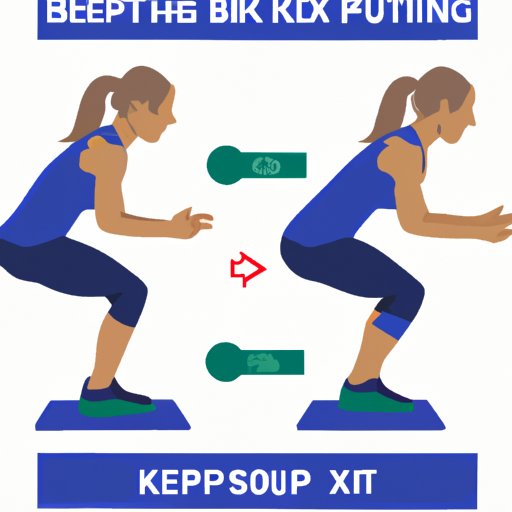Introduction
Anaerobic exercise is a form of physical activity that does not require the use of oxygen for energy production. It is usually characterized by short bursts of intense activity followed by periods of rest or low-intensity effort. Unlike aerobic exercise, anaerobic exercise is not designed to increase cardiovascular fitness, but instead focuses on building muscular strength and endurance.
Definition and Examples of Anaerobic Exercise
Anaerobic exercise can be defined as any type of physical activity that requires the body to work hard, resulting in rapid and sustained increases in heart rate and respiration. This type of exercise requires the body to draw energy from stored sources such as glycogen, rather than relying on oxygen to produce energy. Examples of anaerobic exercises include sprinting, weight lifting, plyometrics, and high-intensity interval training (HIIT).
Benefits of Anaerobic Exercise
Anaerobic exercise has many health benefits, including improved muscular strength, increased bone density, enhanced fat burning, and increased metabolism. In addition, anaerobic exercise has been shown to help improve overall physical performance, reduce the risk of chronic diseases such as diabetes and heart disease, and even boost mental health.

How to Incorporate Anaerobic Exercise into Your Workout Routine
Incorporating anaerobic exercise into your workout routine can be beneficial, but it is important to do so in a safe and effective manner. First, make sure to warm up before beginning any type of exercise. This will help to prepare your body for the strenuous activity ahead. Next, find a way to incorporate anaerobic exercises into your existing routine. You can do this by alternating between aerobic and anaerobic exercises, which will help to keep your body challenged and prevent boredom.

The Difference between Aerobic and Anaerobic Exercise
It is important to understand the differences between aerobic and anaerobic exercise. Aerobic exercises are done at a steady and low-intensity pace, while anaerobic exercises involve short bursts of high intensity activity. The main difference between the two is the duration and intensity of the exercise. Aerobic exercise is typically done for longer periods of time, while anaerobic exercise is usually done in shorter intervals.
Types of Anaerobic Exercise
There are several different types of anaerobic exercise, each with its own unique benefits. Plyometrics is a type of exercise that utilizes explosive movements to build power and speed. Weight training is another popular form of anaerobic exercise that involves lifting weights in order to build muscle mass and strength. High intensity interval training (HIIT) is a type of exercise that alternates between short bursts of intense activity and periods of rest. Finally, circuit training is a combination of aerobic and anaerobic exercises that are done in a circuit format.

Guidelines for Performing Anaerobic Exercise Safely
It is important to follow certain guidelines when performing anaerobic exercise in order to stay safe and get the most out of your workout. Start slowly and gradually increase intensity as your body adapts. Monitor your heart rate and listen to your body to ensure you are not overworking yourself. Finally, know your limits and don’t push yourself too hard.
Conclusion
Anaerobic exercise is a great way to improve muscular strength and endurance, as well as burn fat and increase metabolism. It is important to understand the differences between aerobic and anaerobic exercise, as well as how to incorporate anaerobic exercise into your workout routine safely. By following the guidelines outlined above, you can maximize the benefits of anaerobic exercise and reach your fitness goals.
(Note: Is this article not meeting your expectations? Do you have knowledge or insights to share? Unlock new opportunities and expand your reach by joining our authors team. Click Registration to join us and share your expertise with our readers.)
